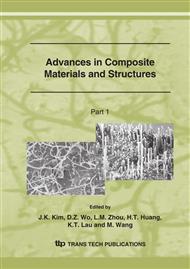p.461
p.465
p.469
p.473
p.477
p.481
p.485
p.489
p.493
Weight Optimization of Composite Flat and Curved Wings Satisfying Both Flutter and Divergence Constrains
Abstract:
Aeroelastic tailoring studies using effective computational method with genetic algorithm have been conducted to find an optimized lamination set which give minimum structural weight. The efficient and robust computational system for the flutter optimization has been developed using the coupled computational method based on the micro genetic algorithm. It is shown that the wing structural weight with both divergence and flutter constrains can be significantly reduced using composite materials with proper optimum lamination compared to the case of isotropic wing model.
Info:
Periodical:
Pages:
477-480
Citation:
Online since:
March 2007
Authors:
Price:
Сopyright:
© 2007 Trans Tech Publications Ltd. All Rights Reserved
Share:
Citation:


